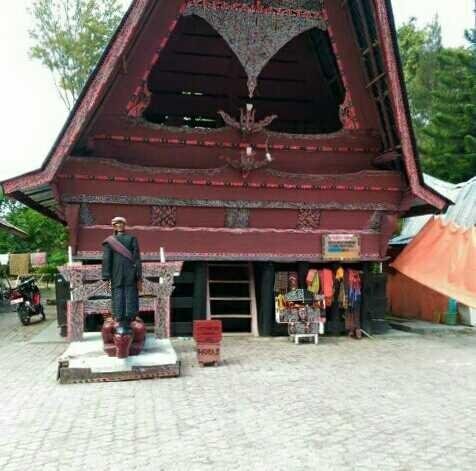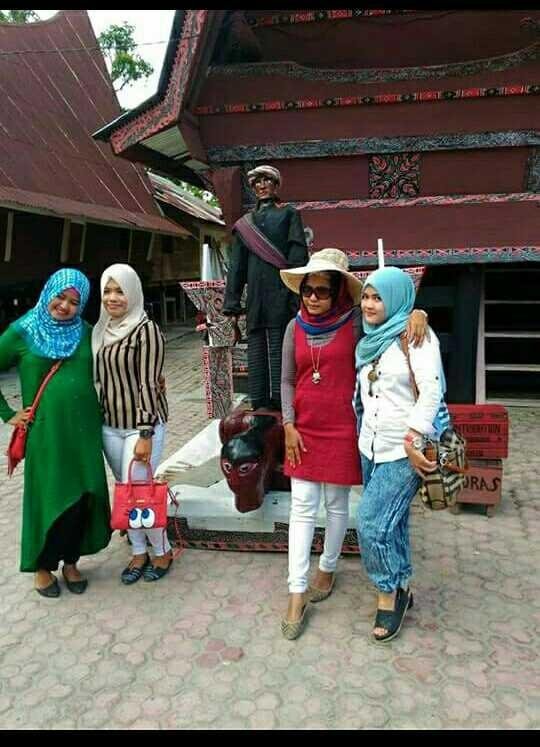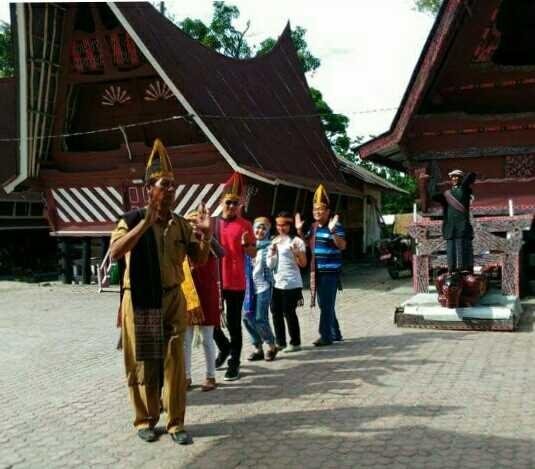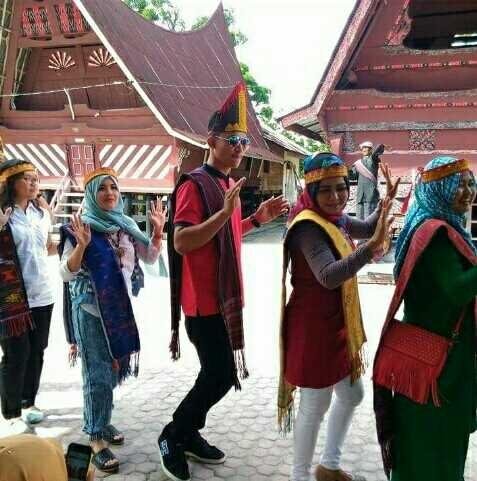
My holiday last year with my family and all staff members of the tour office to MEDAN (SUMATERA UTARA) INDONESIA.

I came to Samosir Island, I saw a doll located in front of some traditional house called the traditional house of Batak tribe, I was curious about the statue, then our tour guide told us to sit that has been provided right in front of the doll and there four traditional houses that are still good and well maintained, then the tour guide tells about the doll that is named SI GALE GALE, so the name. A doll that always looks neat and distinctive with a traditional Batak fashion wrapping complete with ULOS cloth and has a size almost as big as humans, is a reasonable sight found in front of the traditional home of the island of Samosir, North Sumatra. Although not many Samosir residents who keep Sigale-gale in good condition and can still be made dance.
The Sigale-gale puppets have several versions of the story that lie behind the history of Sigale-gale's emergence. And among them the most trusted is the story of the son of a local king who died during the war but did not get sincerity from his parents. Finally made a wooden doll that is the embodiment of the king's son at once given the same name, namely Manggale. The doll accompanied the king until the end of his life, and at the time of his death, the doll danced beside the king's body.
Another version of the story is, it is said there is a husband and wife who are not blessed with offspring. The husband who is a shaman named Datu Partoar then goes to the forest and finds a doll like a girl and Datu transforms it into a human child named Nai Manggale,

The Sigale-gale dolls will dance when the Batak music is played, and the threads that move the body of Sigale-gale are said to amount to the same vein in the human body. Sigale-gale has a religious meaning and a strong element of heresy. The Sigale-gale dance is usually performed when a child dies (mainly male) or in a grieving family for not having a son. They believe the souls of the dead will dwell within Sigale-gale. Often Sigale-gale dances by itself without anyone moving. This doll is often found is shedding tears. However, Sigale-gale has a strong affectionate value relating to parent-child relationships.
The other mystical value contained behind the existence of Sigale-gale is in its making. Everyone who makes a Sigale-gale doll should give up all his soul so that the doll can move like a living human being. Because it is also the Batak people believe that anyone who makes a puppet Sigale-gale will die as a sacrifice after the making is completed. To prevent this, people make parts of the body of Sigale-gale separately, for example one person makes a hand, one makes another leg, then another makes head or body. With the making done by different people, then no one becomes victimized. Another sinister element of Sigale-gale is, this doll can only be placed in a coffin, even dancing on a coffin. Because Sigale-gale really was created to bring someone's death.
But along with the development of the era and the less existence of Sigale-gale, then the mystical element began to recede and turn into the richness of traditional culture. Sigale-gale is now more often shown to tourists and tourists who want to see the Sigale-gale dance live. No longer beside the corpse, Sigale-gale can now dance anytime in front of the tourists who want it and just pay as much as we like.

And we also saw and danced in dance performances for approximately 1 hour,
and during that time you will be amazed with the various movements that details such as moving eyes, head waddle, even his body able to squat and bend. Taking pictures was not a problem, especially with the size of Sigale-gale which is similar to the size of the human body though relatively short. The song that was playing was not manual. Now the dalangs prefer to use cassette recordings to accompany the Sigale-gale dance. In addition to spectacle tours, one of Sigale-gale dolls is now used as objects that are maintained and dimuseumkan in the National Museum. I was the experience of my visit, called TANAH BATAK.
Thank you all.....
Downvoting a post can decrease pending rewards and make it less visible. Common reasons:
Submit